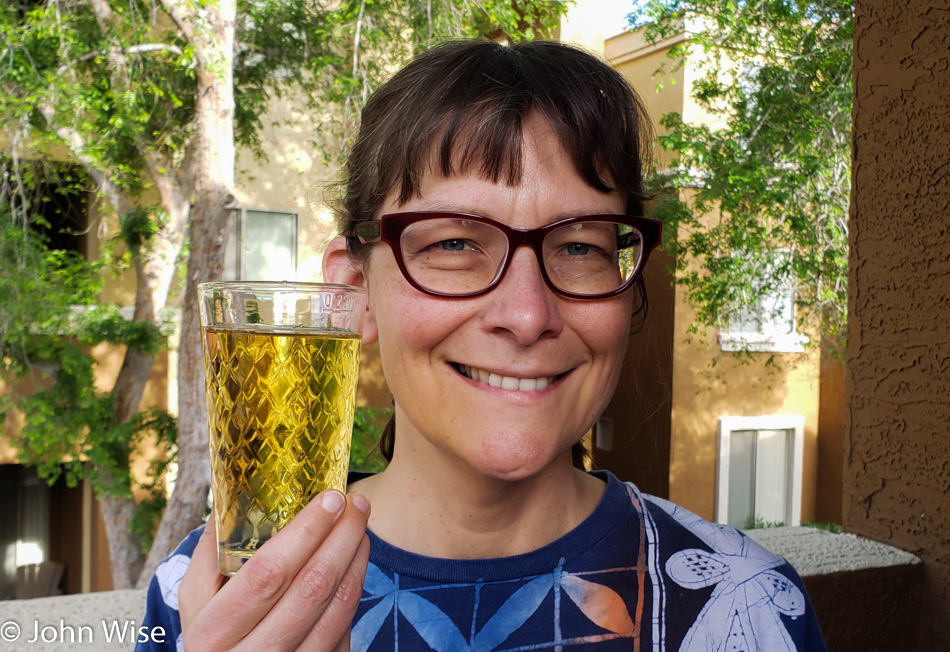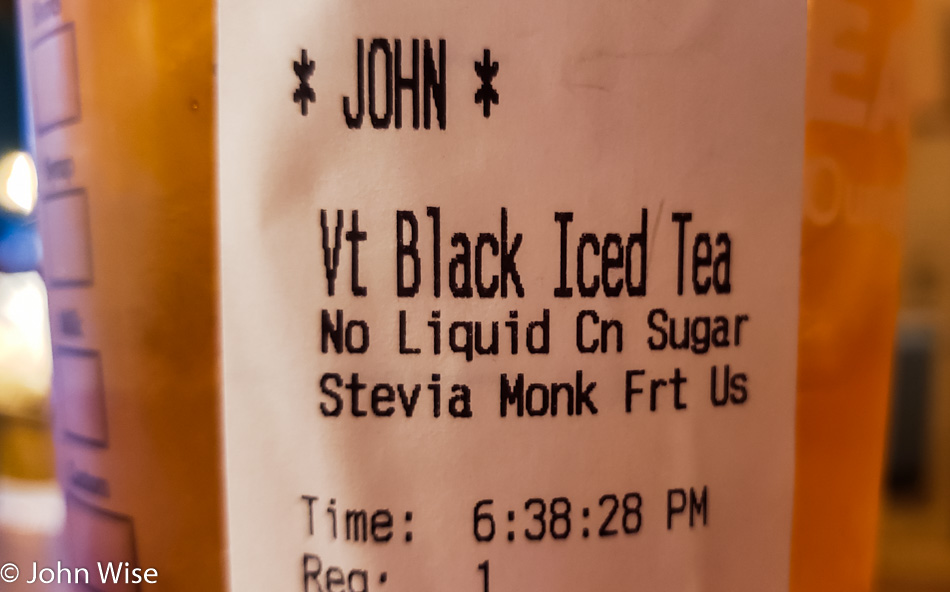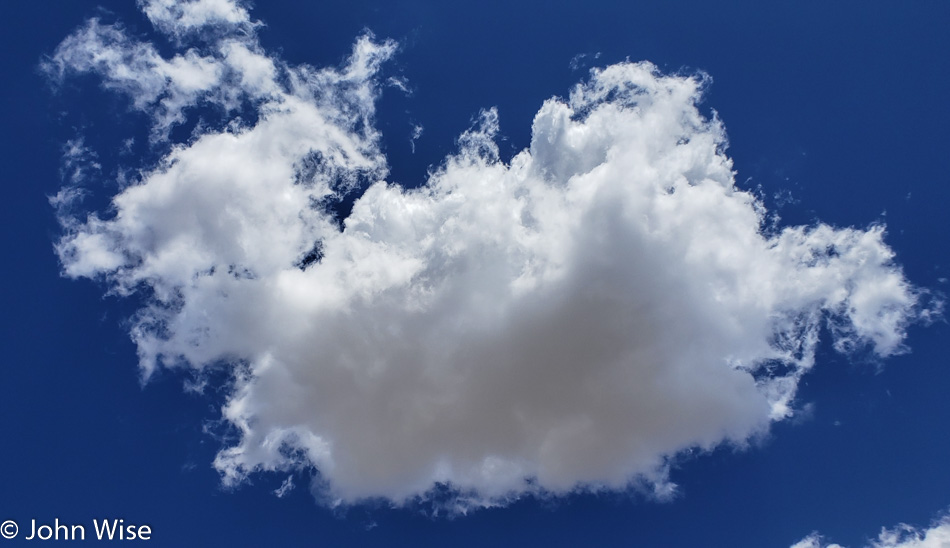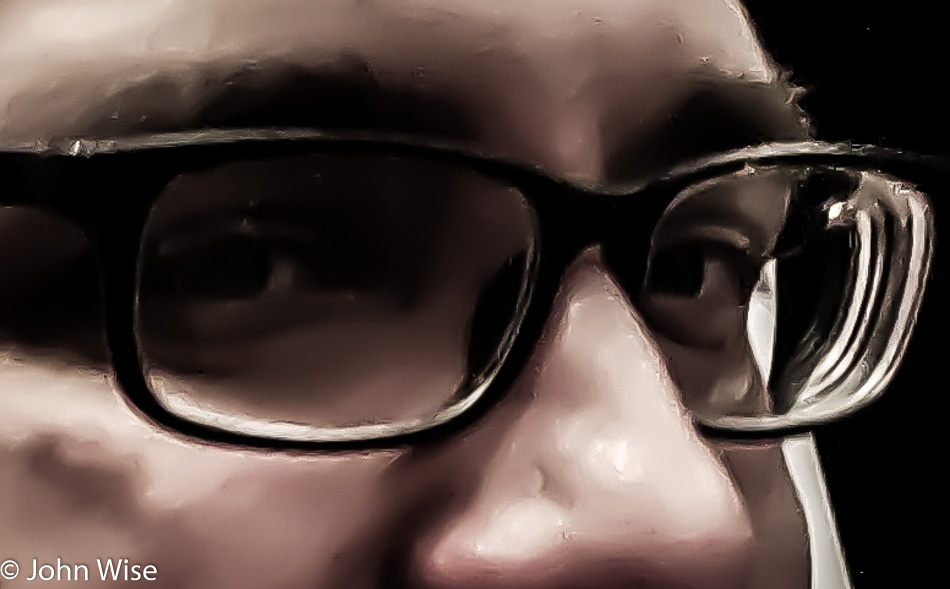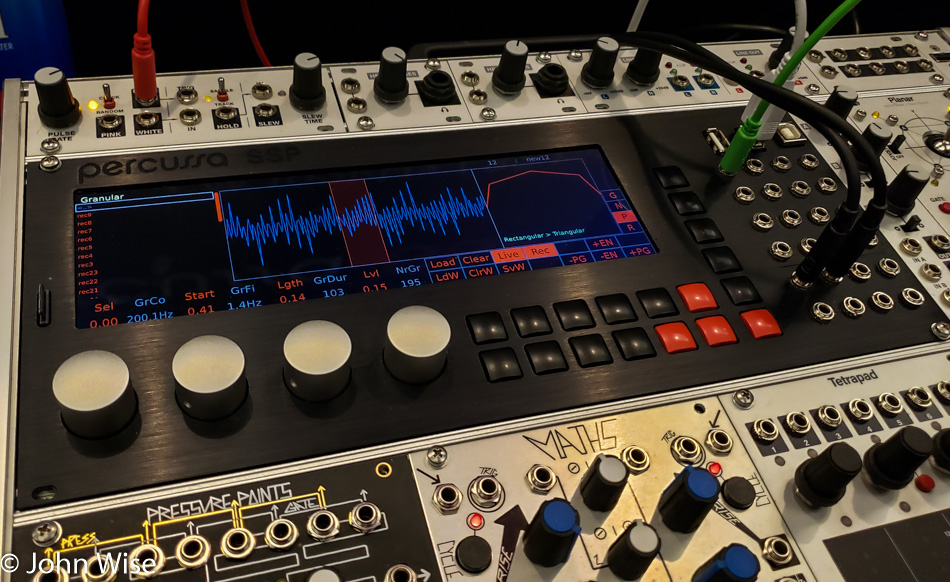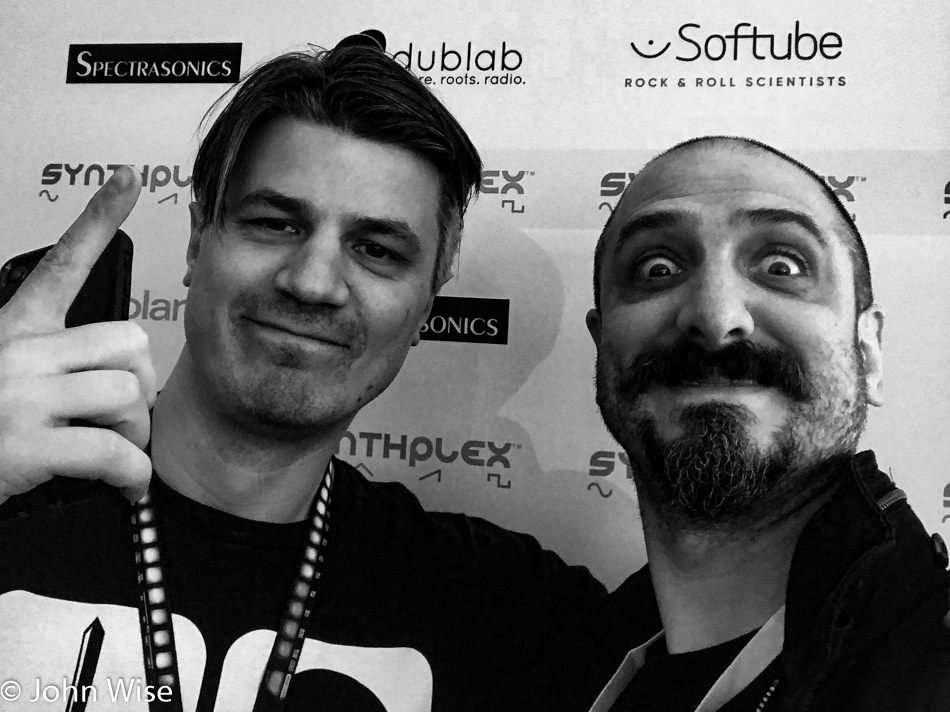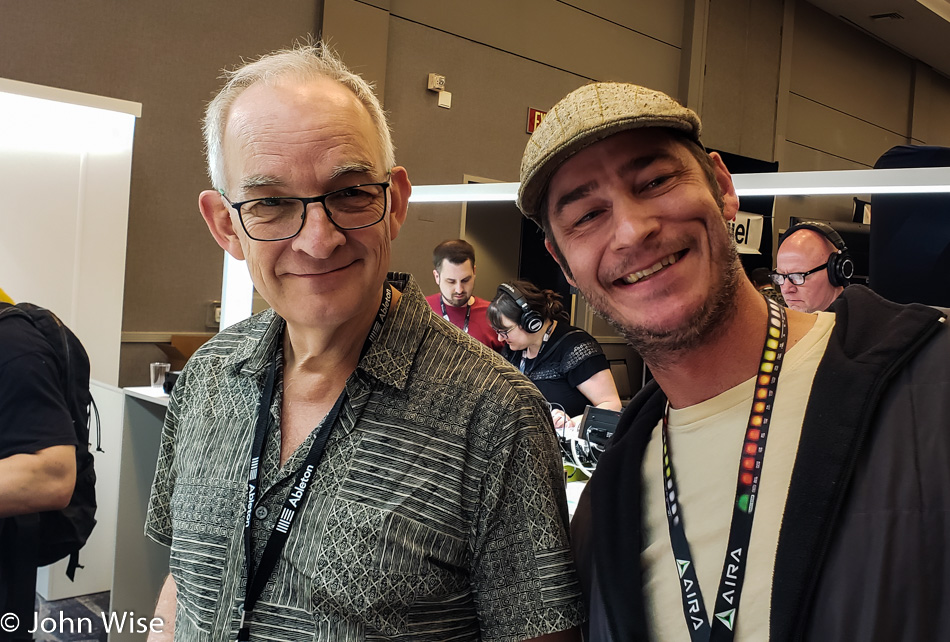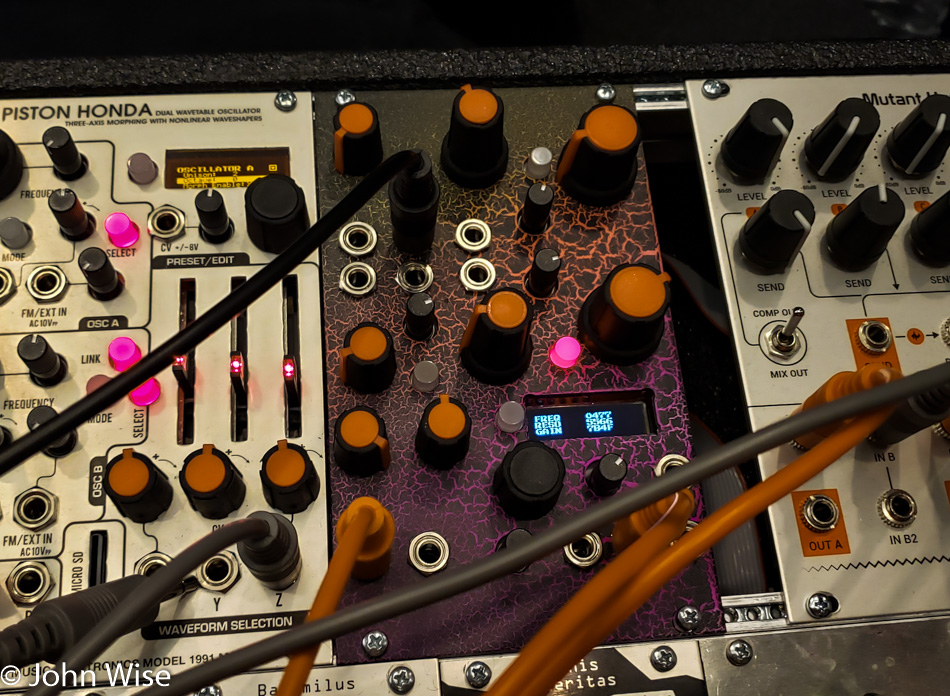
Ran into Ross Fish of Møffenzeef Mødular here at Synthplex in Burbank, California, this morning which was a great way to step into the absurd and hopefully setting a tone for the rest of my encounters here. Turned out that this guy (also known as Czar Dean, Anne Chovie, and Matt Zerella) is a unique one-of-a-kind brand of his own peculiarity. Ross was well on his way to disturbing attendees in ways he wasn’t prepared to share, though he assured me they would feel the effects of his mayhem well into the future. Not that the people who visit a Eurorack conference could easily be described as your run-of-the-mill ordinary everyday kind of people, but Ross is certainly one of those cherry-on-top types of personality. I’d like to say it was a pleasure meeting him for the first time, but then again how can anyone ever know what side of the Fish they are getting?
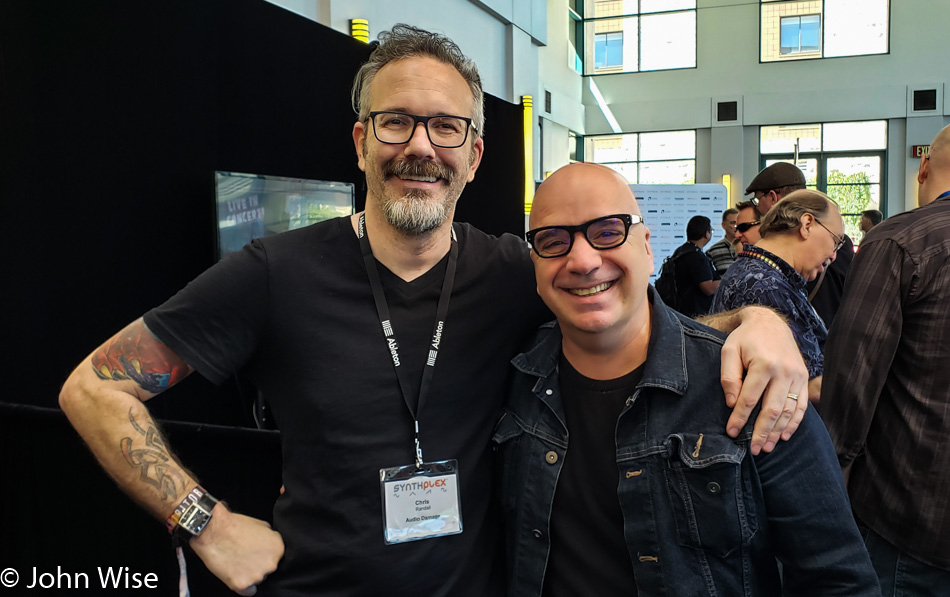
Chris Randall of Audio Damage (left) was on hand, demonstrating his line of software instruments and VSTs too. I met Chris who also lives in Phoenix a little more than a year ago and enjoyed being able to catch up with things before he and I went looking for Scott Jaeger of Industrial Music Electronics who was nowhere to be found. While getting some air and taking a break from the noise in the main halls I saw a guy approaching I’d not seen in nearly 30 years, Bon Harris of Nitzer Ebb (right). Unfortunately, they won’t be playing in Phoenix so we’ll have to head into Los Angeles come October if we’d like to flirt with nostalgia and catch them.

I had the good fortune of meeting Quincas Moreira from Mexico City as well. I’ve chatted with Quincas on social media many a time. Not only is he a composer but also a terrific DIY guy which was how I first learned of him. He’s up here in the Los Angeles area representing Vinicius Electrik who makes their own line of Eurorack modules. Quincas gave me a demo of their newest module, the Lizard, which is certainly a very unique module competing in the ever-growing and increasingly crowded market for synthesizers.
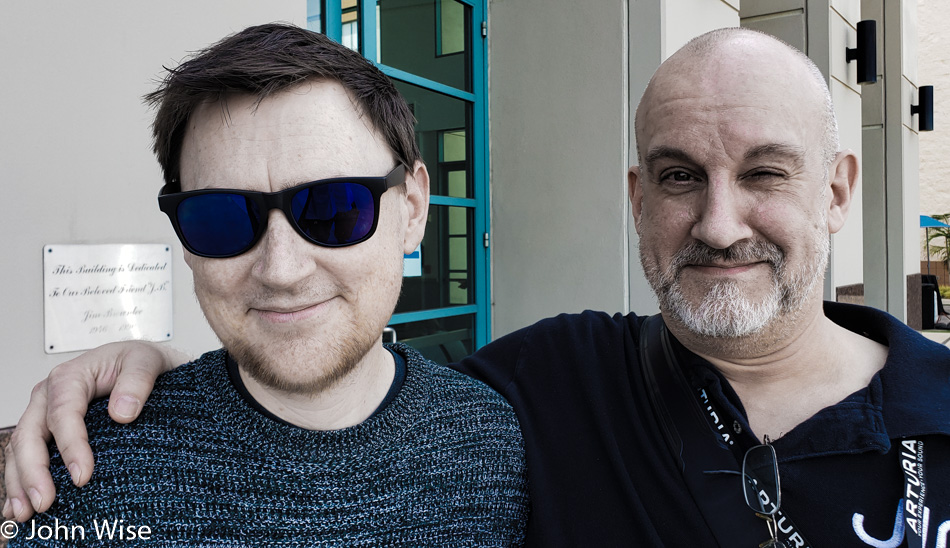
Outside contemplating something to eat I see a logo approaching. The man’s face doesn’t trigger any memories, but I’m wondering just how many people might be wearing a JLR logo on their shirt. I must ask if this is the man behind John L. Rice – it is indeed (he’s on the right). He’s walking along with Blake Griffith (left) from NoiseBug in Pomona that I first visited almost exactly two years ago on April 1st, 2017.

“Wow!” was my reaction to the Panharmonium from Rossum Electro. I feel like this is the granular synthesizer I’ve always been looking for. Technically this is considered a Mutating Spectral Resynthesizer that makes magic choral sounds out of Ronald Reagan speeches (that is what Dave Rossum used to demo the unit to my ears). Sadly the module won’t be out until approximately late spring or early summer but the good news is that it is only going to cost $499.
By now I’ve run into Scott a few times and during that first encounter, I was handed a brand new prototype Bionic Lester MK3 filter module that I’ll be testing over the next month or so. Hopefully, we can make quick work of the beta period as he and I have upcoming travels that will put a pause on that work.
I also had a great visit with Brandon Fessler of Mordax who made my DATA Multi-Function tool. Matter of fact he also repaired my unit when the Arizona dry air created a situation where an adhesive bond failed. The DATA is a godsend module that I use in two primary ways: as an oscilloscope and a tuner. Being able to see what a signal looks like or what key you are tuning to is essential when working with synthesizer voices. If we get lucky this will be the year the Eurorack industry sees a proliferation of granular synthesis devices. Not only is Rossum Electro entering the field, but Émilie Gillet over at Mutable Instruments has hinted at the replacement for Clouds and Mordax has shown a very early prototype of the GXN Granular Synthesis System last year at Superbooth in Berlin.
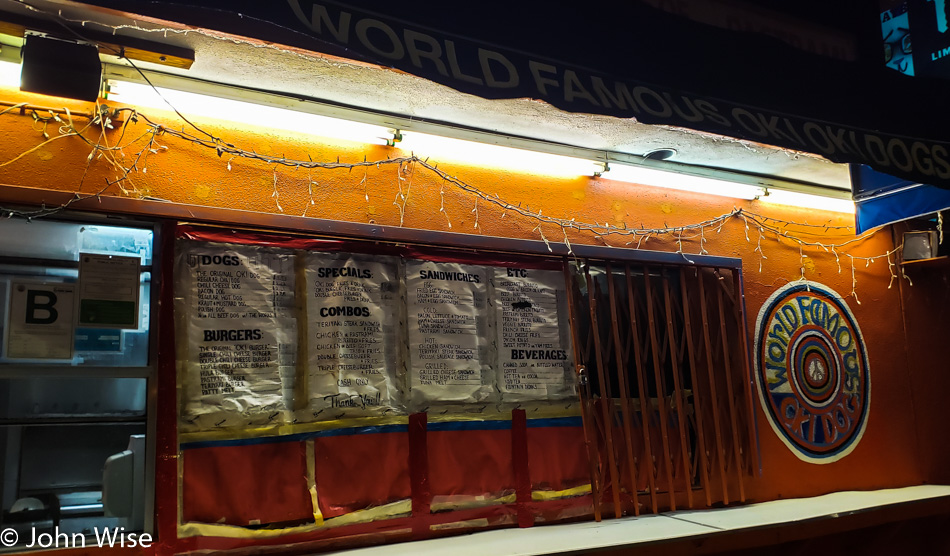
We had to take a pass on the many musical performances that were being held in a couple of locations as it was time to go meet our friends Rotem and Itay who were only a couple of days away from welcoming their first child. It was great to catch up and they were thrilled to be gifted a handwoven baby blanket by Caroline. Matter of fact, we were so involved in our conversation that I forgot to take a photo. We left with huge smiles on our faces and ended up getting a late dinner at the World Famous Oki Dog on the way back to the motel.
